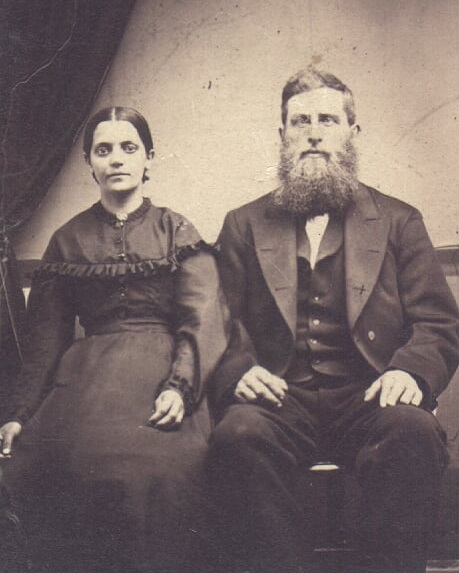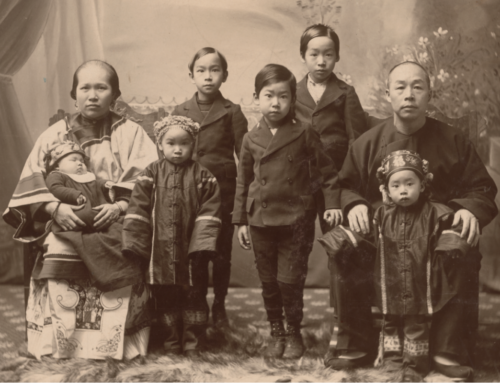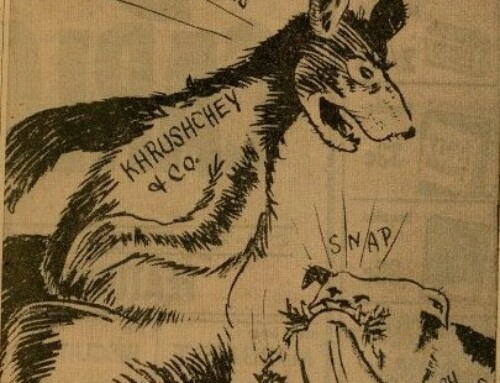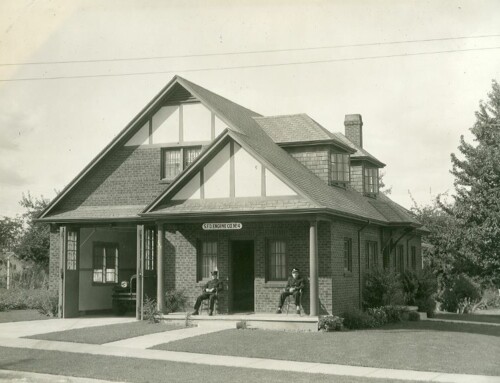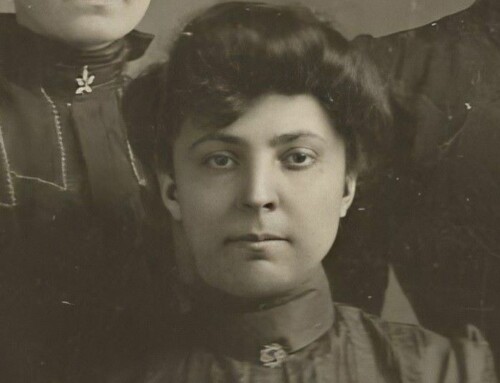In some respects, it was the perfect scenario for a gripping murder mystery. A dark summer night, isolated railway town and a wealthy businessman from out-of-town waiting for the morning train. We discovered the story doing background research for the museum’s Shelton collection, comprised of artifacts from Oregon’s first female “acting” governor Caralyn B. Shelton. Born Carrie Bertha Skiff, she was 9 years old on that dark night in July 1886 when her father Willis Skiff disappeared from the porch of the North Powder Hotel in Eastern Oregon never to be heard from again.
Mr. Skiff had traveled by train to North Powder to arrange for the purchase of grain for his flour mills and as a result carried a large sum of cash on his person, according to the newspapers. He planned to stay overnight at the North Powder Hotel and catch the morning train back to his family in Union. After supper that evening in the hotel dining room he was last seen smoking on the porch between 8:30 and 9:00 pm. When he did not return home the following day, his family became alarmed and one of his sons was dispatched to North Powder to check on him. Finding no trace of his father, he raised the alarm and a search party of 15-20 citizens from Union aided by the people of North Powder searched the town, surrounding countryside and river, to no avail.
Because of Skiff’s prominence and material wealth, his disappearance became nationwide news. The Pinkerton Detective Agency was called in, a $5000 reward offered, and huge sums were spent tracing down every clue that might furnish an explanation for his disappearance. By Fall, based on circumstantial evidence and without the discovery of a body, arrests were made: proprietors of the hotel, the Bobiers, stableman Jack Godfrey, and an itinerant doctor named Tibbetts.
A long and sensational trial followed with a parade of witnesses varying from family members and friends, business associates, law enforcement, and citizens of North Powder. Witnesses that testified of hearing a cry of distress after dark. Witnesses to blood found near the hotel barn and on a trail leading out of town. Expert witnesses in blood types, animal vs. human, and witnesses to suspicious behavior and threats issued by the defendants.
The most damning evidence though, came from hotel employee Rachel Miller. She testified that on the evening of July 24th Mr. Skiff asked her to wake him for the 6 o’clock train. Then, after dark, Mrs. Bobier sent Rachel on a fool’s errand to purchase sugar at the store, despite the half barrel already in the pantry. When Rachel left for the store, Mr. Skiff was smoking on the porch with Mr. Bobier and Dr. Tippetts. Upon her return the porch was empty.
When she awoke at 5 o’clock the next morning she found Skiff’s bedroom door open and a bed with no sign of being used. Alarmed, she went to the barn to ask Godfrey if he’d seen Mr. Skiff. He replied with an oath that the traveler had “gone where the dogs would not bite him.” She also found blood spots on the porch where Skiff had been sitting though an effort had been made to wash them off. But it was all to no avail. Unwilling to convict upon circumstantial evidence, without a body, the jury ordered the defendants released.
It was not until July 1888 that further evidence came to light. A body was discovered on the bank of the North Powder River, five and a half miles below the town. In a letter written by J. W. Shelton, attorney and Skiff family friend, the body had the appearance of having been buried in the sand and then exposed by water. An undershirt and drawers were still on, an old pair of shoes were on the feet, and a small cotton rope or cord was tied around the neck. The skull was broken near and to the left of the top. Shelton was confident that the body found was that of his friend Willis Skiff and vowed to make every endeavor to establish his identity.
A coroner’s inquest was convened and evidence presented. Body size and measurements were consistent with that of Mr. Skiff. A phrenologist testified that the skull contours and measurements were also a match. In the end it was the dental evidence that convinced the jury that the remains could be positively identified. After a lengthy search, Mr. Shelton had located the itinerant dentist that had filled a tooth for Mr. Skiff.
A new trial could not be convened at this point however, because the defendants had scattered. Bobier had been committed to the insane asylum shortly after the first trial. Godfrey’s whereabouts were unknown. And according to The La Grande Chronicle “There is a rumor afloat that Tibbetts, who was tried for the murder of Willis Skiff, was hung last week in Montana and confessed that he killed a man at North Powder, Oregon, named Willis Skiff, and sunk his body in Powder river. How much truth there is in the report we cannot say at present, but are of the opinion that it is true, as at the time of the trial public sentiment and circumstances were against Tibbetts, but enough evidence could not be gathered to convict him.”
This article was written by Kaylyn F. Mabey for the Statesman Journal where it was printed 21 July 2019. It is reproduced here with sources for reference purposes.
Sources:
- Trying to Solve a Mystery, Oregon Statesman, 24 Sep 1886, p. 3
- Reward, Morning Oregonian, 7 Oct 1886, p. 8
- 3 Men Arrested, Oregon Statesman, 1 Oct 1886, p. 3
- Detectives, Oregon Statesman, 28 Oct 1886, p. 1
- Nolan L. Skiff entry, History of Oregon, Carey, p. 609



